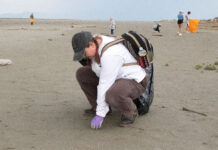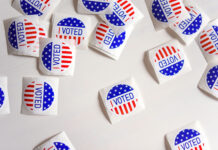Earlier this month, the Intergovernmental Panel on Climate Change published a dire report: the impact of global climate change is worse than initially predicted.
The report, released Oct. 1, warns of worsening drought, wildfires, food shortages, extreme heat and poverty if wide-sweeping changes are not made over the next 12 years.
The findings predicted a 2.7-degree global temperature change if greenhouse emissions continue at the current rate. That means, we have until 2030 to reduce carbon emissions by 45 percent below 2010 levels and until 2050 to reduce them 100 percent, significantly shrinking the previously accepted timeline.
The report also encourages the idea of a carbon tax, estimating a $135 to $5,500 per ton tax by 2030 to combat the pollution put off by large corporate entities.
What the report doesn’t highlight is the power of the average person and what can be done to reduce an individual’s impact on the climate.
Vote for the environment
Salt Lake Community College’s own environmental club has curated a checklist for students and staff to follow, one that aims to take personal action against climate change.
Jessica Berryman, a co-advisor and professor in the biology department, is a firm believer in science and the effects of human-caused climate change.
“My own certainty is that [climate change] is a problem,” she says. “The more scientific research that’s been done, and the conclusions that have been made, only make me more certain.”
Berryman supports taking individual action on climate change. Though most emissions created are from large companies, she says there is still a place for action on behalf of the people, and being an advocate for personal responsibility can take the form of voting.
Berryman believes policymakers and elected officials need to have a firm grasp on science and recognize that climate change is caused by human actions, adding there needs to be a “separation between political ideology and science.”
No matter what side of the political spectrum someone falls into, Berryman says there needs to be support for science-based fact.
“Small things can go a long way”
Hillary Goldsmith, former president to the environmental club, suggested a list of actions that can be taken by students to reduce their carbon footprint.
Her list includes practical changes such as taking public transportation whenever possible, which is now free for all SLCC students through the OneCard. She also recommends lifestyle improvements like riding a bike, eating one or two meals a day without meat, investing in higher-quality items that don’t need to be replaced as often and line-drying clothes instead of using a dryer.
Goldsmith says making these changes will not only reduce a student’s carbon footprint, but also help the pocketbook.
“Buying things that last a long time will save you time and money, plus it’s better for the earth,” she says. “Things like outerwear, footwear, backpacks and electronics are good examples of things you’ll get more use out of when you invest in higher-quality options.”
Many students, like Kenna Lyman, already live by Goldsmith’s approach when they think about climate change.
“Small things can go a long way,” she says. “It’s not hard to eat one meal without meat – have a salad.”
Lyman also added carpooling to the list.
“[Most] of the pollution you see in Utah is from cars. Ask a friend to drive instead of taking two [cars],” she says. “It’s simple things.”
Go out and give back
Lyman fundraises for the Nature Conservancy, the top preservation non-profit in the world. It has more than 600 scientists across the globe finding ways to conserve natural habitats.
In 2017, The Nature Conservancy planted more than 25,000 trees in Northern Utah, which Lyman says can reduce air pollution in the valley by 10 percent. That work was done with the help of volunteers, community members and fundraisers.
Lyman says the organization’s website includes resources for climate change if a student wants to find out more or get involved.
“There are volunteer opportunities posted constantly. Just keep checking back, you’ll find something,” she says.
Berryman also noted that resources for students at SLCC are abundant. The Thayne Center at the Taylorsville Redwood Campus, for example, matches students with non-profit organizations, like the Nature Conservancy.
Regardless, Berryman urges students to get involved however they can.
“The urgency hasn’t changed in my mind,” she says. “We can’t wait, we need to do this now.”






